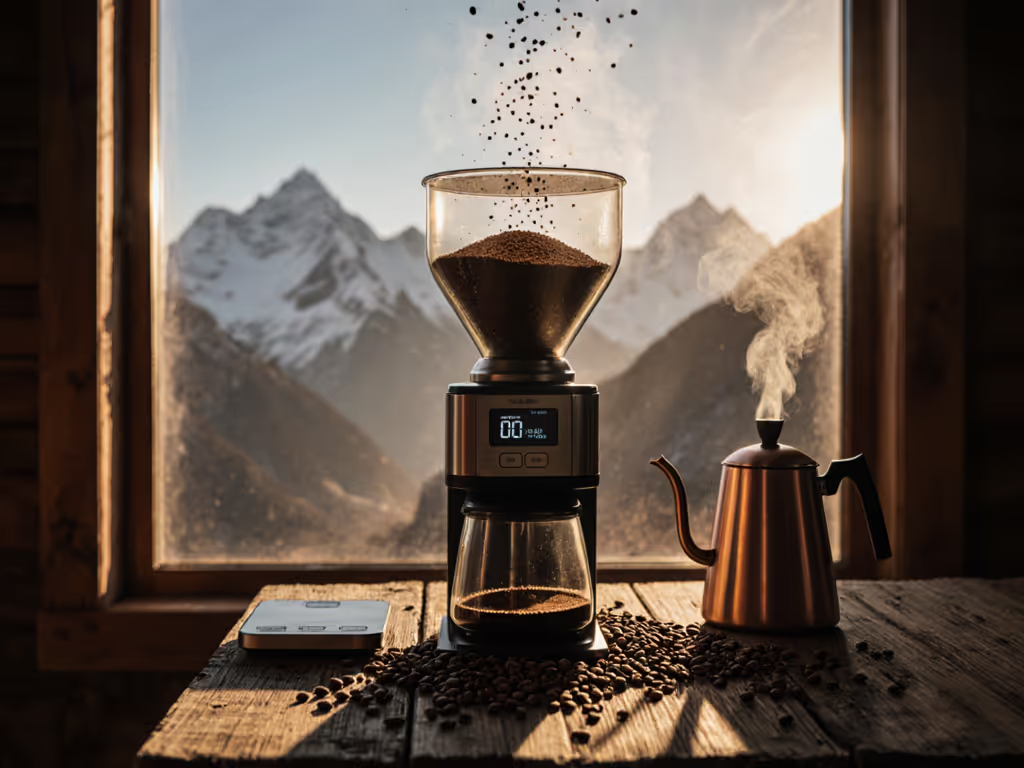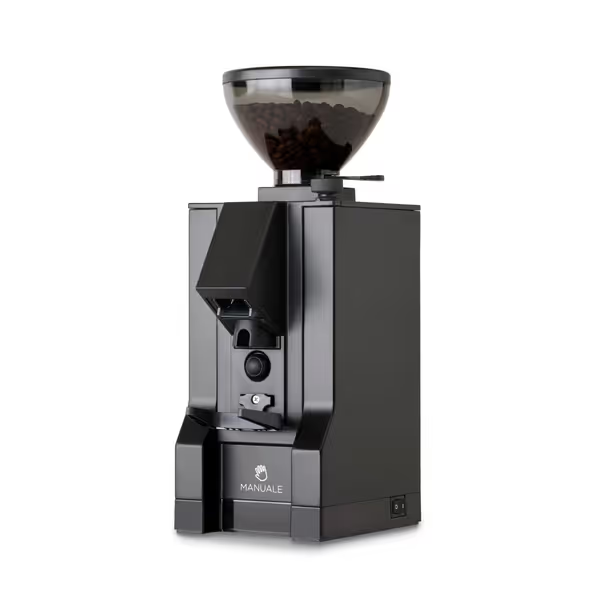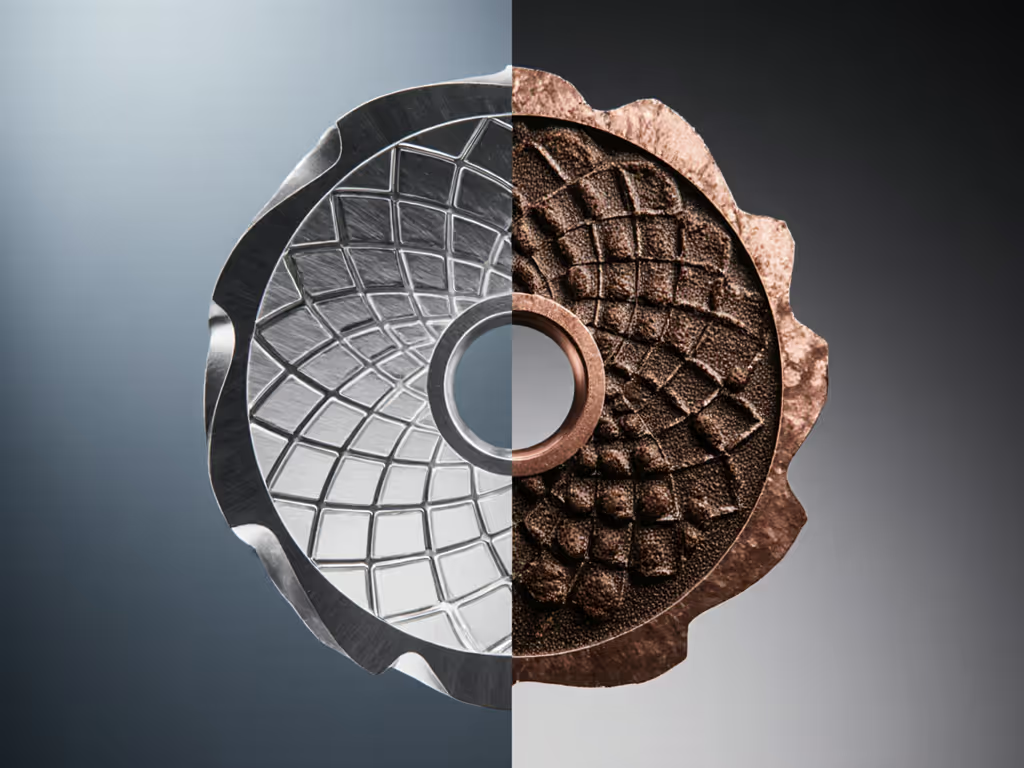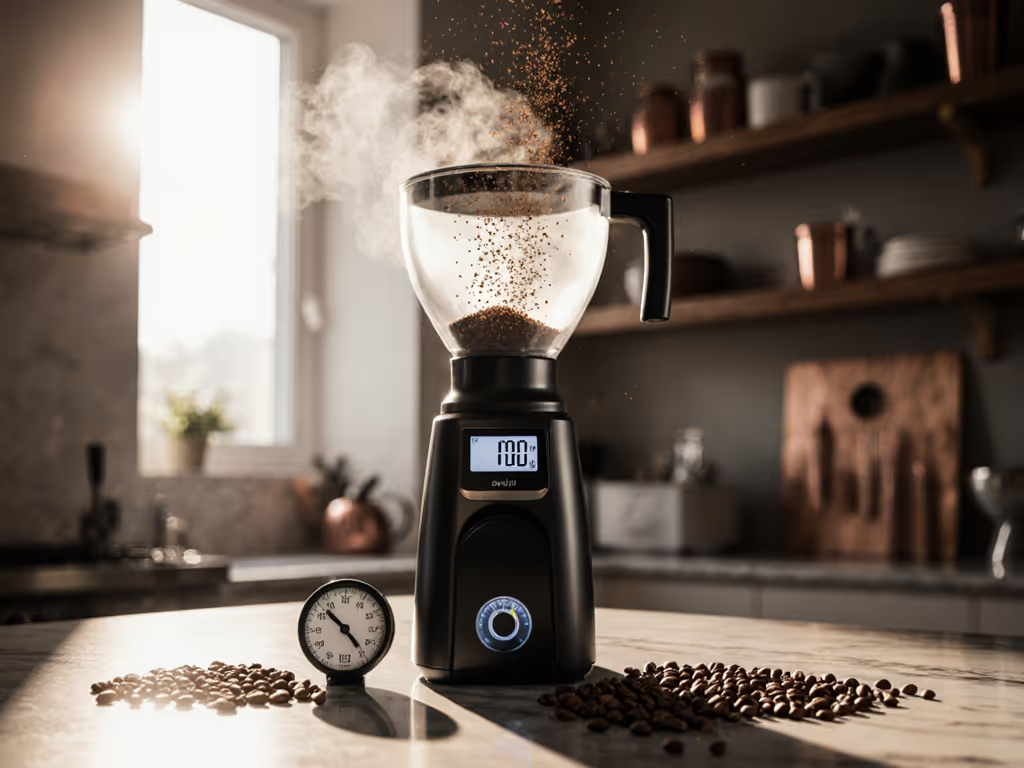
Burr Wear Impact On Extraction Stability

If you've noticed inconsistent espresso shots or sour pour-overs despite meticulous technique, grinder aging effects may be the silent culprit. Far beyond mere inconvenience, burr wear impact on coffee fundamentally compromises extraction stability, especially when thermal drift collides with mechanical fatigue. As a grinder stress-tester who's seen espresso flavors collapse mid-peak service, I'll dissect how wear manifests in your cup, not just in specs. Forget flash-in-the-pan novelty; sustainable precision demands understanding the slow grind toward irreversibility. Alignment and drift separate toys from tools in service.
Why does burr wear destabilize extraction?
Burr wear isn't about sudden failure, it's a gradual erosion of three critical factors: particle size distribution, extraction yield consistency, and heat management. As burrs dull (typically after 250-500 kg of beans), micro-teeth fractures create uneven gaps. A recent SCA longevity study confirmed 0.05mm+ variance in gap tolerances directly correlates to 8-12% increases in fines production. This isn't theoretical: in blind tastings, panels detected chalky texture and faded acidity before machines registered weight discrepancies.
Crucially, worn burrs amplify thermal drift. Steel burrs operating at 1,350 RPM (like the Eureka Mignon Notte's 50mm set) absorb heat from beans and friction. New burrs dissipate this efficiently; aged ones retain heat, widening gaps as temperatures rise. During a Saturday rush, that's why shots slow and acidity dulls, not just from bean change, but from burr carriers shifting under inconsistent force.

Eureka Mignon Notte Espresso Grinder
What are the earliest sensory indicators of burr wear?
Don't wait for visible burr damage. Key burr lifespan indicators manifest in extraction behavior:
- Rapid channeling despite perfect tamping: Worn edges shed fines unevenly, creating flow paths even in 18g doses. Check for uneven puck erosion.
- Yield volatility: Shots pulling 30ml at 28s one day, 42s the next despite identical parameters. A 2g+ yield swing suggests >0.1mm burr misalignment.
- Stale notes in fresh beans: Oily roasts accelerate wear, but any grinder past 300kg will extract rancid notes from residual oils oxidizing in micro-fractures.
I recall a café where acidity flattened mid-service, a classic sign of thermal drift from worn burr carriers. Cleaning fixed retention issues, but only burr replacement restored stability. To understand why, see our grinder retention guide and how residual grounds mute flavor and destabilize shots. Your grinder isn't "just dirty" when these patterns persist.
How does usage frequency dictate maintenance scheduling?
Maintenance scheduling by usage must prioritize extraction outcomes over calendar dates. Consider these thresholds:
| Usage Level | Cleaning Frequency | Critical Checks |
|---|---|---|
| Daily espresso (50g+/day) | Weekly Grindz purge | Burr gap uniformity (0.03mm tolerance) |
| Mixed methods (espresso/pour-over) | Bi-weekly | Thermal stability (shot time variance) |
| Weekend-only | Monthly deep clean | Burr edge sharpness (microscopic inspection) |
High-volume users err by overlooking silent degradation: volatile compounds evaporate faster from inconsistent grinds, muting fruit notes. If heat is the variable, learn to stabilize grinder temperature to reduce thermal drift across back-to-back shots. Home users mistakenly think "light use = low wear." But infrequent grinding allows oils to polymerize in burr crevices, accelerating corrosion. For both, grinder component degradation becomes irreversible after 5-7 years without regimen checks.
Can alignment compensate for burr wear?
Temporarily. Realignment corrects mechanical misalignment (e.g., loose carriers), but cannot restore microscopic burr geometry. Here's my calibration protocol for suspected wear:
- Stabilize thermals: Run 10 consecutive doses, discarding first 5.
- Measure yield variance: Target <1.5g fluctuation across 3 shots at 18g dose.
- Check burr uniformity: Use feeler gauges at 4 quadrants (0.05mm tolerance max).
- Listen for grind noise: Harmonic whine = trapped fines; uneven rumble = edge wear.
If yield variance exceeds 3g or gaps exceed 0.1mm, burrs are past recalibration. Tools like the Eureka Mignon Notte's bottom-burr adjustment preserve settings during cleaning, but alignment alone won't fix tooth erosion. Shimming masks symptoms; it compounds stress on weak points.
Does cleaning frequency accelerate or delay wear?
Neither. Aggressive cleaning without burr retirement causes more harm than neglect. Use our coffee grinder cleaning guide for safe schedules, products, and techniques. Chlorinated cleaners corrode steel; excessive grinding of Grindz pellets induces micro-fractures. Extraction consistency over time relies on targeted maintenance:
- Daily: Vacuum purge chute (5g) after last dose. Never grind dry rice; silica shreds burrs.
- Weekly: Run food-safe cleaning pellets (e.g., Urnex Grindz) at coarse drip setting.
- Quarterly: Inspect burr edges under 10x lens. Replace if >10% of teeth show chips.
Over-cleaning wears drive gears; under-cleaning traps oils that degrade burr coatings. Track taste shifts, not just usage hours. When double shots lose sweetness after 300kg, thermal drift has won.
When is burr replacement truly necessary?
Replace burrs when extraction consistency over time can't be restored after recalibration and cleaning. Definitive signs:
- Yield decay: Same grind setting pulls 20% longer shots after 6 months of steady use.
- Fines explosion: >15% retention in 200μm sieves (vs. 8-10% for new burrs).
- Irreversible thermal drift: 5+ second shot time variance between 1st and 10th shot in a sequence.
Quality burrs (hardened steel, 58+ HRC) last 500kg; cheaper alloys fail at 200kg. Budget grinders often ship misaligned, verify out-of-box tolerances to 0.05mm before blaming wear. If it's time to upgrade, consider an SSP burr upgrade to restore clarity and consistency.

Conclusion: Build Your Stability Protocol
Your grinder's aging isn't a question of if, but how. Grinder aging effects compound silently until you're chasing ghosts in your extraction. Prioritize tools that maintain calibration integrity through thermal stress, not novelty. Log yield metrics weekly. Inspect burrs quarterly. Accept that burrs wear like tires; ignore them, and you're driving on bald rubber. Stability beats novelty when your target is repeatable extraction.
Related Articles




Coffee Grind Sizes Decoded: Science Over Guesswork
Learn how to replace grind guesswork with a science-based focus on particle distribution and consistency, and why these drive extraction, flow, and flavor. Gain method-specific targets and simple calibration protocols - including sieve checks and thermal drift adjustments - for repeatable results at home or in service.
